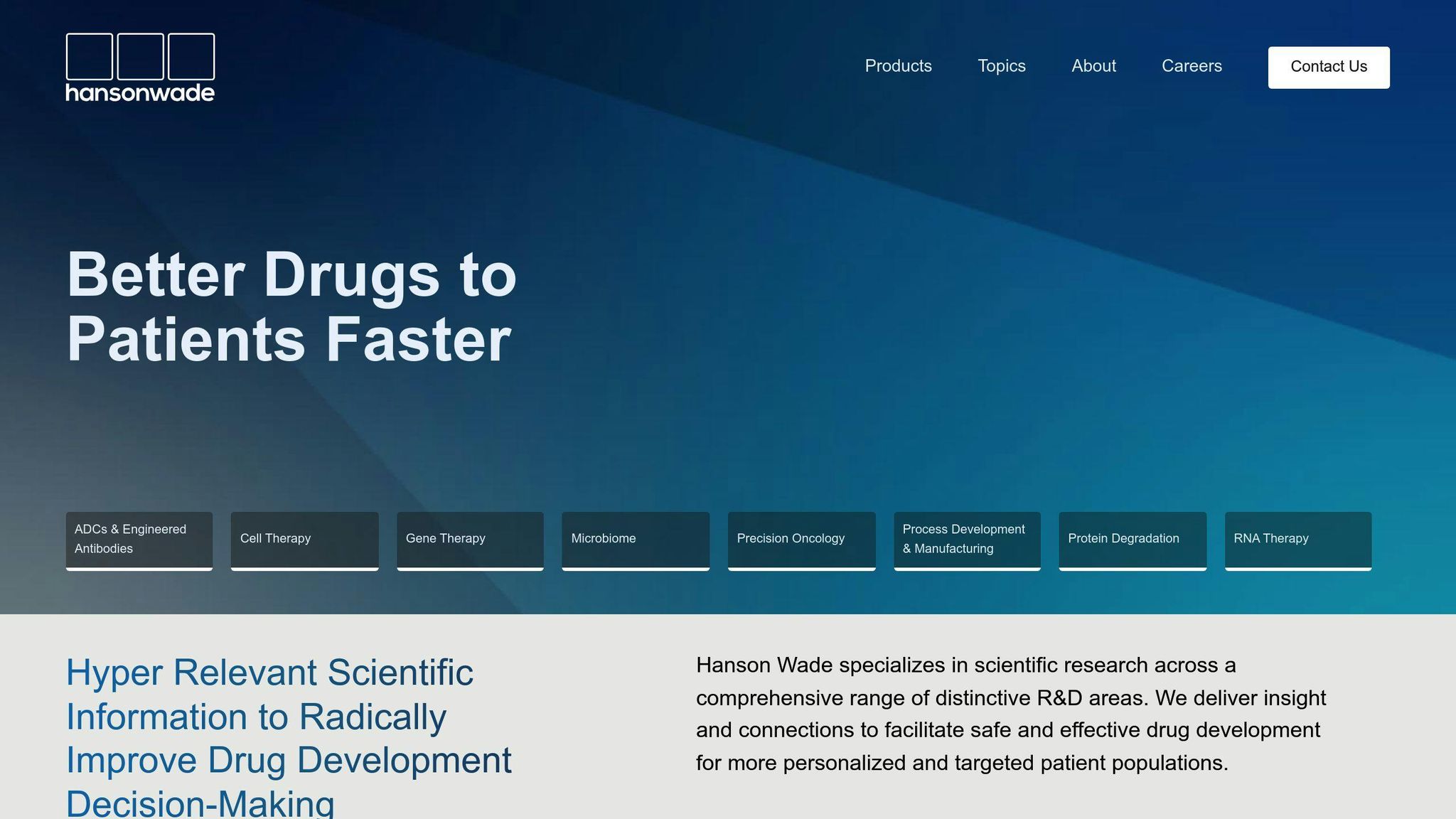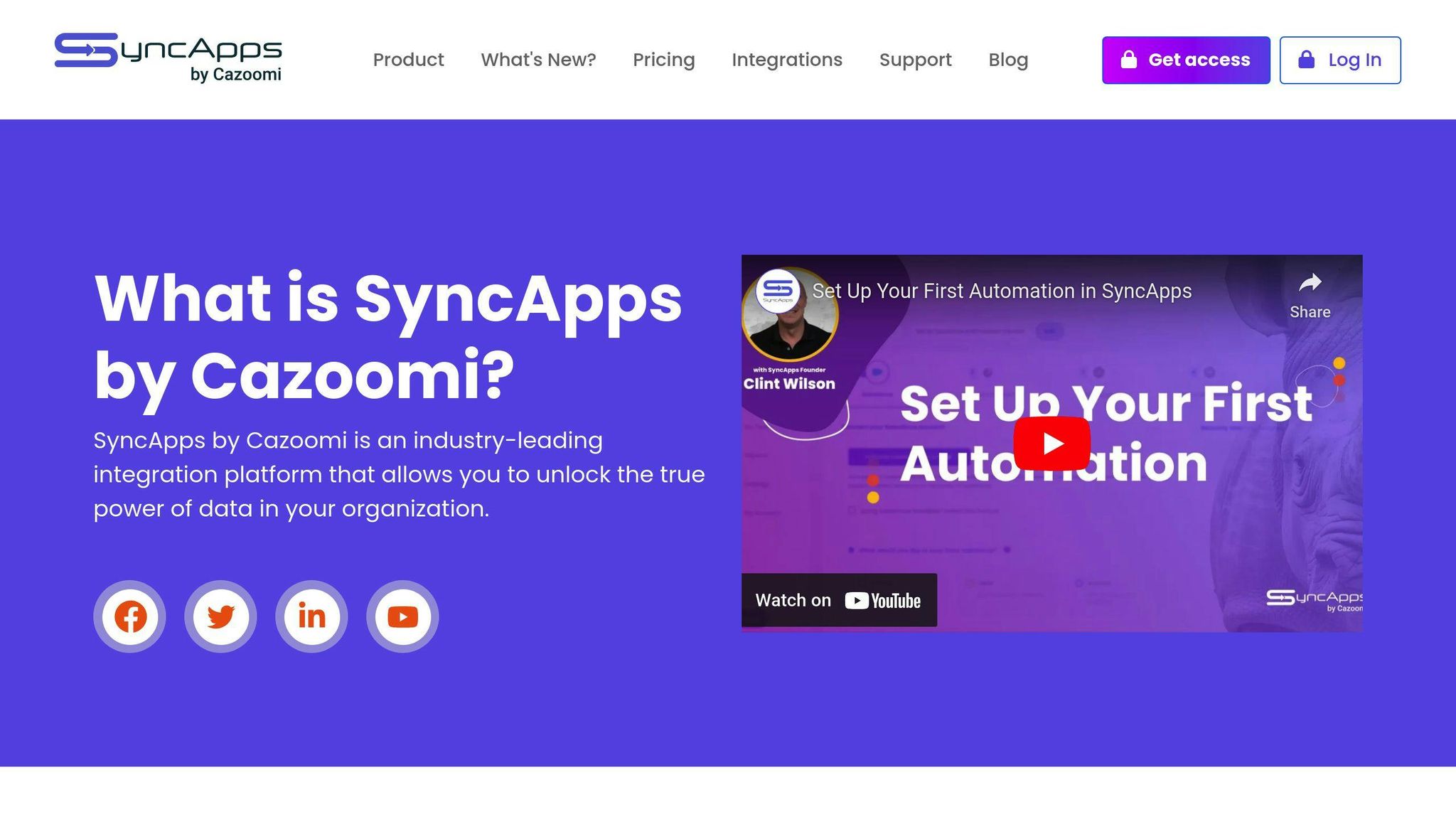Real-World Wins: Compelling Examples of Marketing Automation Success


Marketing automation is transforming businesses of all sizes. Here’s how companies are using it to boost results:
Key takeaways:
These examples show how marketing automation, when used effectively, can drive growth and efficiency. Whether it’s speeding up lead responses or eliminating manual data entry, the right automation strategy can transform your marketing efforts.
Ready to boost your marketing? Start by identifying time-consuming tasks, setting clear goals, and choosing tools that fit your needs. Remember: start small, measure results, and adjust as you go.

Hanson Wade, a London-based company running global business conferences, hit a wall with their software. It was holding them back big time. Here’s how they turned things around:
Hanson Wade’s software was a hot mess:
Then, boom! They stumbled upon Jitterbit Harmony at a Salesforce event. It was like finding water in the desert.
Mihai Plavitu, their tech guru, put it this way:
"We hit a wall when we tried to do more complex stuff with our old platforms."
So, they brought in Jitterbit Harmony to tie everything together and automate their processes.
Once they got Jitterbit Harmony up and running, things changed fast:
1. Real-time data: No more guessing games. They could see conference sign-ups as they happened.
2. Smoother bookings: Less money wasted, fewer screw-ups.
3. Global teamwork: Everyone, everywhere, on the same page.
4. Sales team supercharged: Live info on their phones. No more "I’ll get back to you" excuses.
5. Money talks: Financial reports came in on time, not a week late.
They haven’t crunched the numbers yet, but Mihai’s pretty pumped:
"We haven’t done the math, but it’s clearly paying off. Real-time data transfer is saving us a ton of time and headaches."
The project was such a hit, they even promoted the person who ran it. Talk about a win-win!
And the best part? Mihai thinks they’re just getting started:
"Looking ahead, we can see how this will help us grow without breaking the bank."
Hanson Wade took a mess and turned it into a masterpiece. Now that’s how you fix a software problem.

Salesforce turned a messy lead management process into a big win using their own Data Cloud tech. Here’s how they did it:
Salesforce had a crazy goal: cut their "speed to lead" time from 20 minutes to under 1 minute. Guess what? They nailed it.
Using AI and Data Cloud, Salesforce slashed their lead assignment time from 20 minutes to just 20 seconds. That’s not just faster – it’s a whole new ballgame.
Michael Andrew, SVP of Marketing Decision Science at Salesforce, said:
"With trusted data from Data Cloud, we have been able to use AI, machine learning, and automation on the Salesforce Platform to reduce our speed to lead assignment from 20 minutes to 20 seconds, allowing our sales teams to take action faster."
This speed boost matters. Why? Companies that respond to inquiries within five minutes have a 75% chance of turning those leads into customers. Salesforce just put themselves in prime position to grab those opportunities.
But it wasn’t just about speed. The AI got smarter too. It scored leads based on quality and interest. The result? 93% of leads that turned into opportunities were scored 3 or higher by the AI. Sales teams could now focus on the leads that really mattered.
At the core of Salesforce’s success is their "Customer 360 Truth Profile." It’s not just a fancy name – it’s a data management powerhouse.
This profile gives a complete view of customers, built from:
This massive data integration let Salesforce understand their customers better than ever. But it wasn’t just about hoarding data – it was about using it smart.
The improved data handling led to better customer segmentation and more personalized marketing. The result? Salesforce marketers saw web engagement jump by 165% using Data Cloud. That’s what happens when you have the right data at your fingertips.
Sonia Lele, Senior Director of Data Science at Salesforce, explained:
"Data Cloud helps us identify our high-value segments faster so we are able to target them with relevant, personalized messaging. This has allowed us to increase the speed of our campaign optimization, which in turn has improved marketing metrics across all stages of the user journey."
The sales team got a boost too. They could now create a "top contacts" segment, including customers who had visited a pricing page. This meant they could follow up at just the right moment.
Salesforce’s story shows that even messy data challenges can become opportunities for growth. By unifying their data, using AI, and focusing on speed and personalization, they’ve set a new bar for marketing automation success.

Small companies often struggle with data management. SyncApps by Cazoomi changes that.
SyncApps tackles common small business headaches:
Sarah Thompson of Thompson Digital Marketing says:
"Before SyncApps, we were drowning in data entry tasks. Now, our CRM and email marketing platform talk to each other seamlessly. It’s like having an extra team member who never sleeps!"
SyncApps isn’t just saving time. It’s transforming small businesses:
1. Productivity Boost
Businesses save 15 hours a week on data entry. That’s 60 hours a month for growth.
2. Better Data
Manual entry errors? Down by 95%. Hello, better decisions and happier customers.
3. Money in the Bank
Businesses are saving $2,000 a month on data management costs.
4. Marketing Magic
Marketing conversion rates are up 25%. That’s more bang for your marketing buck.
Angie Abratiguin from Cazoomi’s Platform Marketing team puts it this way:
"Upon implementing SyncApps, our clients consistently report not just time savings, but a transformative impact on their overall business operations. The ability to focus on strategic tasks rather than data entry has been a game-changer for many small businesses."
The takeaway? You don’t need to be a big corporation to win with marketing automation. With tools like SyncApps, small businesses can punch above their weight and grow faster.
These marketing automation projects succeeded because of two things: fewer software tools and more automation. Let’s break it down.
Companies that cut down on their tech stack saw big wins in efficiency and savings. Here’s why:
Better data flow: Fewer tools meant no more data silos. Companies got a clearer picture of how customers interacted with them. This led to smarter, faster decisions.
Take SkipTheDishes. They used Salesforce’s Sales Cloud and Service Cloud to grow fast during COVID-19. The result? They handed out CAN$71 million in rebates and made an extra $1.6 million.
Lower costs: Too many tools can drain your wallet. By cutting back, companies saved money on subscriptions and freed up cash for other things.
A household goods retailer felt this pain. Their Senior VP of Digital Transformation said:
"Having so many overlapping systems in a stack costs a ton. We had three email vendors and two text vendors. Add up the account management, professional services, and platform costs across all those vendors, and you’re basically paying five times over."
Improved efficiency: Fewer tools meant less time jumping between apps and more time on important work.
Storykit, for example, cut their lead scoring and reporting time in half by connecting HubSpot with LinkedIn Ads. This let them focus on getting better leads.
Automation was the secret weapon that powered these marketing efforts. Here’s how:
Faster processes: Automated workflows killed manual tasks and sped things up big time.
Look at Salesforce. They cut their lead assignment time from 20 minutes to 20 seconds using AI and their Data Cloud tech. Michael Andrew, SVP of Marketing Decision Science at Salesforce, put it this way:
"With trusted data from Data Cloud, we’ve used AI, machine learning, and automation on the Salesforce Platform to cut our lead assignment time from 20 minutes to 20 seconds. This lets our sales teams act faster."
Improved accuracy: Automation cut down on human mistakes, leading to better data and smarter choices.
6click saw this firsthand. They grew operations by 806% after starting to use HubSpot’s CRM software. This growth came from lining up sales operations and onboarding processes, which used to be all over the place.
Scalability: Automated systems let businesses handle more work without hiring tons more people.
Universal Creative Solutions doubled their key performance indicators without spending more on clients or marketing. They did this by using ActiveDEMAND‘s automation tools.
These success stories show that marketing automation isn’t just about fancy tech. It’s about how you use it. By cutting down on tools and ramping up smart automation, these companies transformed their marketing. They grew and became more efficient in ways that old-school manual processes just couldn’t match.
Want to make marketing automation work for you? Here’s how:
Set clear goals: Know what you want to achieve. Salesforce aimed to slash their lead response time from 20 minutes to under 1 minute with their Data Cloud tech. They crushed it, getting it down to 20 seconds.
Map your customer journey: Get to know how customers interact with your brand. Companies that do this are twice as likely to outperform competitors. It helps you tailor your automation to customer needs at each stage.
Connect your tools: SkipTheDishes linked Salesforce’s Sales Cloud and Service Cloud. The result? CAN$71 million in rebates and $1.6 million extra revenue during COVID-19.
Clean up your data: Good data is key. Make sure it’s accurate and complete before feeding it into your automation tools. Hanson Wade turned their messy data into a real-time decision-making powerhouse this way.
Train your team: Give your staff the skills to use automation tools. When 6click adopted HubSpot’s CRM, they aligned their sales and onboarding process. The outcome? A whopping 806% growth in operations.
To make sure your marketing automation is delivering:
Watch key metrics: Keep tabs on lead conversion rates, customer acquisition costs, and customer lifetime value. These show if your automation is paying off.
Use behavior triggers: Set up personalized interactions based on what customers do. Salesforce boosted web engagement by 165% using their Data Cloud this way.
Keep tweaking: Don’t just set it and forget it. Always test different parts of your campaigns. Universal Creative Solutions doubled their key performance indicators without spending more by regularly fine-tuning their ActiveDEMAND automation tools.
Sync marketing and sales: Connect your marketing automation platform with your CRM. This helps teams see and talk to each other better. As Michael Andrew from Salesforce put it:
"With trusted data from Data Cloud, we have been able to use AI, machine learning, and automation on the Salesforce Platform to reduce our speed to lead assignment from 20 minutes to 20 seconds, allowing our sales teams to take action faster."
Calculate ROI: Link your results to costs. Remember, companies typically see a $5.44 return for every $1 spent on marketing automation in the first three years.
Marketing automation is a game-changer. The examples we’ve seen show how businesses can get big results by using automation tools the right way.
Look at Hanson Wade. They fixed their software mess. Or Salesforce, with their AI system that responds to leads fast. Even small businesses are winning with tools like SyncApps. The point? When you use marketing automation smart, you grow and save time.
Here’s what these success stories teach us:
1. Smoother work
Automation kills manual tasks. Teams can focus on big-picture stuff. Hanson Wade now has real-time data access. Salesforce assigns leads in 20 seconds.
2. Personal touch, big scale
Draper James boosted revenue by 15.4%. How? They sent 48.7% fewer emails. But each one hit the mark.
3. Smart choices from data
When you combine data and AI, you make better calls, faster. Salesforce’s lead scoring is 93% accurate. That’s powerful.
4. Happier customers
TruWood’s SMS marketing and Premier’s price drop alerts show it. Automation helps you talk to customers at the right time, with the right message.
5. Money talks
You can measure how well automation works. TruWood got 35X ROI on cart abandonment campaigns. SyncApps users save $2,000 a month on data work.
Want to use marketing automation to grow? Here’s how to start:
Marketing automation isn’t just for big companies. It’s for anyone who wants to work smarter, not harder. So, take that first step. Your future self will thank you.